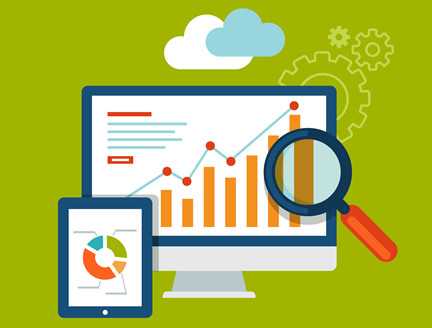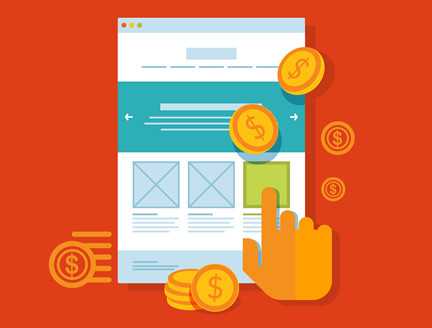Free Consultation
Phone: +1 650-353-2040
Toll-Free: +1 855-997-9195
Skype: ActiveMediaUSA
0-9.
301 Redirect: An SEO term that refers to redirecting traffic from an old web page to a new web page.
303 Redirect: Similar to a 301 redirect, but a temporary redirect as opposed to a permanent one. 303 redirects are shown as a “see other” response to the server. They should be replaced with 301 redirects where possible.
404 Server Code: The 404 or Not Found error message is a standard response code indicating that the client was able to communicate with a given server, but the server could not find what was requested.
A.
Advertising Network: Is a company that connects advertisers to web sites that want to host advertisements. The key function of an ad network is aggregation of ad space supply from publishers and matching it with advertiser demand.
AdWords: Is an advertising service by Google for businesses wanting to display ads on Google and its advertising network. The AdWords program enables businesses to set a budget for advertising and only pay when people click the ads. The ad service is largely focused on keywords.
Anchor Text or Link Text: The clickable text in a hyperlink, usually gives the user relevant descriptive or contextual information about the content of the link's destination.
ASO (App Store Optimization): Is the process of improving the visibility of a mobile app (such as an iPhone, iPad, Android, BlackBerry or Windows Phone app) in an app store (such as iTunes for iOS, Google Play for Android, Windows Store for Windows Phone or BlackBerry World for BlackBerry).
B.
Backlink or Backward Link: An incoming hyperlink from one web page to another website. These links are important in determining the popularity (or importance) of your Web site.
Bing: Is a web search engine from Microsoft.
Blog: Is a discussion or informational site published on the World Wide Web and consisting of discrete entries ("posts") typically displayed in reverse chronological order (the most recent post appears first).
Bot: Short for Robot. See Robot.
C.
Cascading Style Sheet (CSS): Are used to format the layout of Web pages. They can be used to define text styles, table sizes, and other aspects of Web pages that previously could only be defined in a page's HTML.
Click Through Rate (CTR): Is the number of users that click on a specific link out of the total users that view a page, email, or advertisement. It is commonly used to measure the success of an online advertising campaign for a particular website as well as the effectiveness of email campaigns.
Competing on Google: The number of advertisers worldwide bidding on each keyword relative to all keywords across Google.
Content Marketing: Is a strategic marketing approach focused on creating and distributing valuable, relevant, and consistent content to attract and retain a target audience and, ultimately, to drive profitable customer action.
Content Network: Is a network of sites that provide content (text, videos, audio, etc) and allow advertisers to show ads along side it.
Contextual Advertising: Is a form of targeted advertising for advertisements appearing on websites or other media, such as content displayed in mobile browsers. The advertisements themselves are selected and served by automated systems based on the identity of the user and the content displayed.
Conversion Rate: The number of visitors who completed the desired action. For example: signing up for news letter, buying your product, downloading a trial version of a software, etc. (conversion rate tool) Calculating conversion rate: the number of visitors who took the desired actions divided by the total number of visitors in a given period.
Cost Per Click (CPC): Refers to the actual price you pay for each click in your pay-per-click (PPC) marketing campaigns.
Crawler: See Robot.
D.
Day Parting: Is the practice of dividing a day into several segments and directing different forms of programming or advertising to each segment.
Domain Authority (DA) is a search engine ranking score developed by Moz that predicts how well a website will rank on search engine result pages (SERPs). A Domain Authority score ranges from one to 100, with higher scores corresponding to a greater ability to rank.
Domain Name: Is a unique name that identifies a website.
E.
eCommerce: Is the buying and selling of goods and services, or the transmitting of funds or data, over an electronic network, primarily the Internet. These business transactions are business-to-business, business-to-consumer, consumer-to-consumer or consumer-to-business.
External Link: A hyperlink on a Web page that points to a page on a different Web site. For example if another website links to you, this is considered an external link to your site.
H.
HTML: Hypertext Markup Language, a standardized system for tagging text files to achieve font, color, graphic, and hyperlink effects on World Wide Web pages.
HTML5: Is a markup language used for structuring and presenting content on the World Wide Web. It is the fifth and current version on the HTML standard.
Hyperlink: Is a word, phrase, or image that you can click on to jump to a new document or a new section within the current document.
I.
Impressions: The number of times someone views a page displaying your ad. Note that this is not the same as actually seeing your ad, making placement and an understanding of the site’s traffic particularly important when paying on a Cost per 1,000 Impressions basis.
Inbound Link or Incoming Link: Is any link received by a web node (web page, directory, website, or top level domain) from another web node.
Internal Link: A link that is pointing to some other page within the same website. The opposite of internal link is the external link.
Internet Marketing: Refers to advertising and marketing efforts that use the Web and email to drive direct sales via electronic commerce, in addition to sales leads from Web sites or emails.
K.
Keyword: Is the key word or phrase in your web content that makes it possible for people to find your site via search engines. Keywords are what people use to find content they are looking for.
L.
Landing Page: Is any web page that a visitor can arrive at or “land” on.
Link Building: Is the process of getting external pages to link to a page on your website.
Link Popularity: The number of websites that link to a particular site. On most search engines link popularity along with the quality of incoming links are important aspects of determining the ranking of a website on SERPs.
Local Search Marketing: Creating and optimizing your local search listings to enhance the chance of people finding your site when searching on the search engines to learn about the businesses available in their area.
Long Tail Keywords: Are those three and four keyword phrases, which are very specific to whatever you are selling. You see, whenever a customer uses a highly specific search phrase, they tend to be looking for exactly what they are actually going to buy.
M.
Mobile Deep Linking: Is the use of URIs (uniform resource identifiers) to make specific parts of mobile applications addressable so that those elements can be accessed directly by mobile users.
Mobile Marketing: Is promotional activity designed for delivery to cell phones, smart phones and other handheld devices, usually as a component of a multi-channel campaign.
N.
Natural Listings: See organic listings.
O.
Off-page SEO: The aspect of a website that is not located on the site itself, rather elsewhere on the web, but can influence the ranking of this website. More precisely this aspect is the incoming links from other websites. It is much more difficult to control the off-page factors, than the on-page SEO.
Online Directories: A collection of websites organized into categories.
On-page SEO: Refers to factors that have an effect on your Web site or Web page listing in natural search results. These factors are controlled by you or by coding on your page.
One Way Link: Getting a link from a site without linking back to that same website. One way links are very valuable.
Organic Listing: Organic search results are the Web page listings that most closely match the user's search query based on relevance. Also called “natural” search results, ranking high in the organic results is what SEO is all about.
P.
Paid Listing: See Sponsored Listings.
PPC: Short for Pay Per Click. Also called cost per click, is an Internet advertising model used to direct traffic to websites, in which advertisers pay the publisher (typically a website owner) when the ad is clicked. It is defined simply as “the amount spent to get an advertisement clicked.”
PageRank TM or PR: Google’s patented method for measuring page importance on a scale from 0 - 10, where 10 is the highest. The PageRank algorithm analyzes the quality and quantity of links that point to a page.
Q.
Query: Is another term for “keyword” or “search term.” Within Google AdWords, search query reports show the actual terms that searchers used to click on your ads, as opposed to the advertised keyword that is in your account. These two sets of words may or may not be the same.
Quality Score (QS): Is a variable used by Google and Bing that can influence both the rank and cost per click (CPC) of ads.
R.
Responsive Web Design (RWD): Is a web development approach that creates dynamic changes to the appearance of a website, depending on the screen size and orientation of the device being used to view it. RWD is one approach to the problem of designing for the multitude of devices available to customers, ranging from tiny phones to huge desktop monitors.
Return on Investment (ROI): Is the benefit to the investor resulting from an investment of some resource. A high ROI means the investment gains compare favorably to investment cost. As a performance measure, ROI is used to evaluate the efficiency of an investment or to compare the efficiency of a number of different investments.
Robot: A software program that crawls the Internet, by following links and indexing web pages.
S.
Search Engine: A website that performs keyword searches and returns relevant results, websites the user searched for. Today, the major search engines are Google, Yahoo, and MSN.
SE: Short for search engine. See search engine.
SEM: Short for search engine marketing. See search engine marketing.
SEO: Short for search engine optimization. See search engine optimization.
Search Engine Marketing: Is a form of Internet marketing that involves the promotion of websites by increasing their visibility in search engine results pages (SERPs) primarily through paid advertising.
Search Engine Optimization: It is a process of optimizing a website in order to gain top positions on search engines for various keywords, and drive more traffic to the site.
Search Engine Results Page: This is the page the search engines return after a visitor entered a search query.
SERP: Short for search engine results page. See search engine results page.
Search Terms: Is a word or group of words that a person types into a Search Engine to find what they are looking for.
Spider: A software program that crawls the Internet, by following links and indexing web pages.
Sponsored Listings: Are listings on a search engine's results page that have been purchased by an advertiser.
Social Commerce: Is a subset of electronic commerce that involves using social media, online media that supports social interaction and user contributions, to assist in the online buying and selling of products and services.
Social Media: Media for social interaction, using highly accessible and scalable communication techniques. Social media is the use of web-based and mobile technologies to turn communication into interactive dialogue.
T.
Text Ad: Is a form of online paid advertising that is typically just text with a link to your site and copy with a description of the promotion one is offering. They are generally offered through search engine advertisers like Google and Bing.
Title or Title of a Page: An HTML tag used to describe the title of a page. Generally this appears at the top of the browser window. This information is used by many search engines to display the title of each site in the search result listing.
Tracking Code: Information typically included in the URL that allows an advertiser to track the effectiveness of various aspects of an advertisement.
Traffic: Is the amount of data sent and received by visitors to a web site.
U.
URL: "Uniform Resource Locator." A URL is the address of a specific Web site or file on the Internet.
V.
Visibility Percentage: Visibility Percentage is calculated by dividing the Visibility Score by the maximum possible score that would be achieved if all of your keywords were ranked number 1 for all engines. In other words, if a site is perfectly ranked at number 1 for all keywords on all engines, your Visibility Percentage would be 100%. In contrast, if a site is not ranked in the top 30 for any keywords on any engines, then the Visibility Percentage would be zero.




